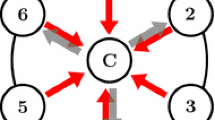Abstract.
One of the theories of human motor control is the λ Equilibrium Point Hypothesis. It is an attractive theory since it offers an easy control scheme where the planned trajectory shifts monotionically from an initial to a final equilibrium state. The feasibility of this model was tested by reconstructing the virtual trajectory and the stiffness profiles for movements performed with different inertial loads and examining them. Three types of movements were tested: passive movements, targeted movements, and repetitive movements. Each of the movements was performed with five different inertial loads. Plausible virtual trajectories and stiffness profiles were reconstructed based on the λ Equilibrium Point Hypothesis for the three different types of movements performed with different inertial loads. However, the simple control strategy supported by the model, where the planned trajectory shifts monotonically from an initial to a final equilibrium state, could not be supported for targeted movements performed with added inertial load. To test the feasibility of the model further we must examine the probability that the human motor control system would choose a trajectory more complicated than the actual trajectory to control.
Similar content being viewed by others
Author information
Authors and Affiliations
Additional information
Received: 20 June 1995 / Accepted in revised form: 6 August 1996
Rights and permissions
About this article
Cite this article
Bellomo, A., Inbar, G. Examination of the λ equilibrium point hypothesis when applied to single degree of freedom movements performed with different inertial loads. Biol Cybern 76, 63–72 (1997). https://doi.org/10.1007/s004220050321
Issue Date:
DOI: https://doi.org/10.1007/s004220050321




